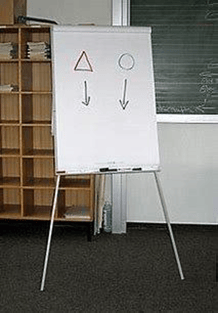If you’ve served a decent length of time in the sales world, you’ll be familiar with the concept of the sales dashboard. In some offices or trading floors, this could be an open affair with one big screen or multiple monitors highlighting the people closing the most deals or the territory where the most amount of product is shifting. Conversely, the visual output and data of a Sales Performance Management (SPM) platform could be for the eyes of selected people only.
It’s likely that if you are using any type of SPM or Customer Relationship Management (CRM) software, that it the sales dashboards available have the power and information to serve and meet needs – the public demonstration of targets reached and quotas matched – or the necessary data and graphics that lets someone know how close (or far) they are to achieving their commission target.
To make the match easier, the SPM wizards at Varicent have shared some essential wisdom on what the main functions are and when you’d use them.
1. Data Rules
You may be dazzled by the good-looking graphics (we’ve all come a long way since hand-drawn flipchart) the but the basic ingredient that makes any and every dashboard a thing or worth is the data itself. Clean, accurate, and fully automated, it’s what separates the error-filled output from a value-rich piece of sales analysis. Anyone still following the manual inputting process must clearly be obsessed with performing repetitive tasks that often go wrong. The purer the data feed going in, the better the reports coming out.

Remember the presentation bad old days?
2. Get the Wider Picture
No, we don’t mean the size of the monitor, we mean the metaphoric picture. Aside from decent data, your sales dashboard charts and numbers increase in strength when they are pulled together and combined from all the relevant sources. Sadly, not only do we still work in silos more often than not, but the data from each department or link in the supply chain is often viewed in isolation. If one dashboard is showing online sales for October and another is focussed on in-store, there needs to be a point where total sales are combined as well. The same goes for territories. How can a sales manager understand resourcing unless they can perform both comparative analyses using a dashboard or run a report that displays more than just one geographical area?
3. Understand the Purpose, Know the User
While there may be several sales dashboards that hold value for multiple people and departments (complete revenue, overall profit and loss, quarterly trading figures), the majority will have a specific significance for certain teams, managers, and sales executives. There is an art or science when it comes to nailing sales dashboard distribution, and that’s down to knowing the user. The closer you get toward a user’s informational needs, the stronger the relevance of the sales dashboard. This is where it pays to understand the difference between vanity metrics (the graphs that look good and make people feel like “winners”) and actionable metrics (the data that brings about clear decision-making).
If you’d like to know more about how an SPM can give you that extra sales “edge”, read all about it here from one of Varicent’s experts.
4. Look and Feel of Your Sales Dashboard
This is the point in the process where a smart display earns its place. Too much clutter and extraneous information is a bad thing. Fonts that are unreadable, also bad. Joining these in the sales dashboard naughty corner is the use of niche terms or acronyms. Think about the colors, themes, spacing, and style of graph you are choosing to use. Tabbed dashboards are great for keeping multiple frames of information on one screen without overcrowding it. If this is for the benefit of the individual sales executive, the information needs to be relevant, simple, accurate, and actionable. And rather than being satisfied with an SPM that can’t do much more than offering a static layout, during your product demo ensure there is time and training for customization.
And Here’s Some Other Sales Dashboard Stuff to Think About:
- Provide context where necessary
- Anything bigger than one screen is a report, not a dashboard. Want to know how to create the perfect sales report? We have the answer here.
- Know what the critical metrics are that need to be noticed
- Then, go beyond metrics and offer insight that sums up the numbers
- Create a dashboard template that can be easily updated.
Good sales dashboards are the cornerstone of your SPM. When used well they provide the intelligence to make your strategy understood and should be the single source of truth for anyone needing to see output, results, and objectives.
Make sure your salesforce has their eyes on the right sales dashboards by visiting www.varicent.com today or by talking to your local Varicent representative.



